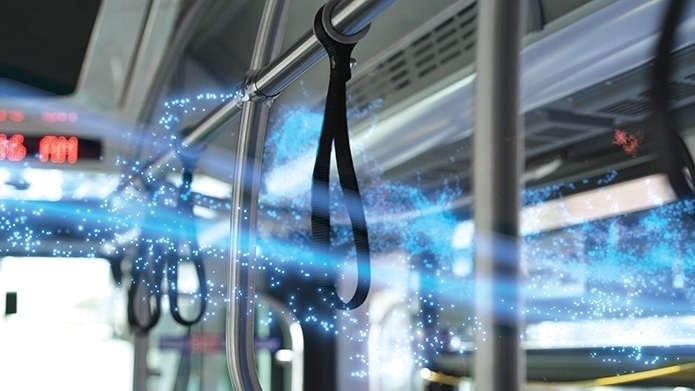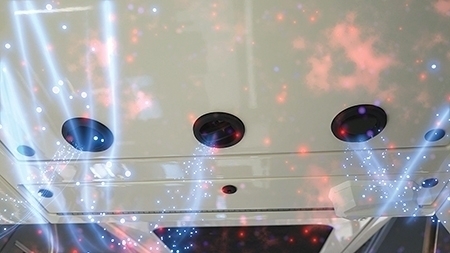
By John-Paul McGovern, PhD.
As transit agencies return to full service in many cities and municipalities, the industry is turning to new, breakthrough technology to prevent COVID-19 transmission and restore faith in public transportation.
When the pandemic started, we saw a massive impact on the nation’s public transportation sector. We felt the need to focus much of our engineering efforts on how we could help people safely return to their daily lives using public transportation. The bus industry needs technology which decreases the chance of transmission for all parties involved – the public, operators, facility staff and front-line employees that work in these vehicles every day.
 One such technology, brand new to North American bus transportation, is Active Air Purification by United Safety. This air sanitization breakthrough is powered by ultraviolet photohydroionization (UV-PHI®) technology, provided by RGF® Environmental Group, Inc., which disperses low-dose hydrogen peroxide molecules throughout the cabin of a transit bus. These molecules react with– and effectively eliminate 99% of bacterial and viral pathogens both airborne and those on surfaces surface. including SARS-CoV-2 (which causes the COVID-19 disease), H1N1 flu, and other cold-causing viruses.
One such technology, brand new to North American bus transportation, is Active Air Purification by United Safety. This air sanitization breakthrough is powered by ultraviolet photohydroionization (UV-PHI®) technology, provided by RGF® Environmental Group, Inc., which disperses low-dose hydrogen peroxide molecules throughout the cabin of a transit bus. These molecules react with– and effectively eliminate 99% of bacterial and viral pathogens both airborne and those on surfaces surface. including SARS-CoV-2 (which causes the COVID-19 disease), H1N1 flu, and other cold-causing viruses.
This continuous purification makes the onboard air more like the outdoor air, which naturally contains hydrogen peroxide molecules at similar concentrations to those created by UV-PHI systems. As is well document, in outdoor air transmission rates of SARS-CoV-2 (which causes the COVID-19 disease) are dramatically reduced.
Although it is a new concept for American bus transportation, UV-PHI® technology is widely used in government buildings, hospitals and the food service industry (including all Chipotle restaurants)around the country.
An installed system produces onboard levels of hydrogen peroxide that are more than an order of magnitude below OSHA’s recommended maximums for contained environments. In bus cabin test environments, Active Air Purification is maintaining bacteria levels equivalent to hospitals and food processing centers – even without daily disinfection.
The device can be installed directly into an existing HVAC system or as a standalone unit and has been widely tested for transit and rail operations with further applications in the first responder and school bus markets. The system is customized for bus transportation and, unlike some other technologies, is safe for the materials of a bus’s interior.
One of the first transit authorities to adopt this innovation is Green Bay Metro. During the pandemic, according to Patty Kiewiz, transit director for Green Bay Metro, the agency saw ridership reduced to levels as low as 30 percent of normal capacity during the worst months of the pandemic. Numbers like that were unfortunately common across the transit industry in 2020, and restored confidence in safe transit will be key to ridership returning to previous levels.
“I have received so much positive feedback, from riders and employers, already regarding the air purification system,” Kiewiz said. “Public confidence must be restored, and this is a move in the right direction.”
Active Air Purification with RGF UV-PHI® technology creates a dynamic antimicrobial and antiviral environment inside the bus, improving the safety for passengers and operators all day – every day. This preventive air treatment technology has been tested and used in in hotels, hospitals, and clean laboratories for decades – and it can be a valuable weapon against virus transmission in public transit.
John-Paul McGovern, PhD. is vice president of engineering for United Safety. Visit www.unitedsafetycorporation.com for more information.
